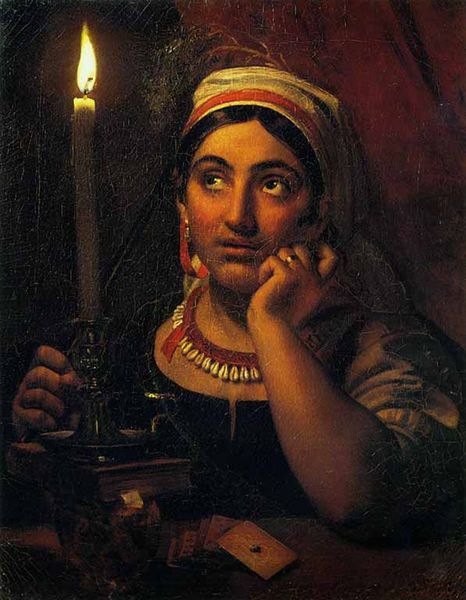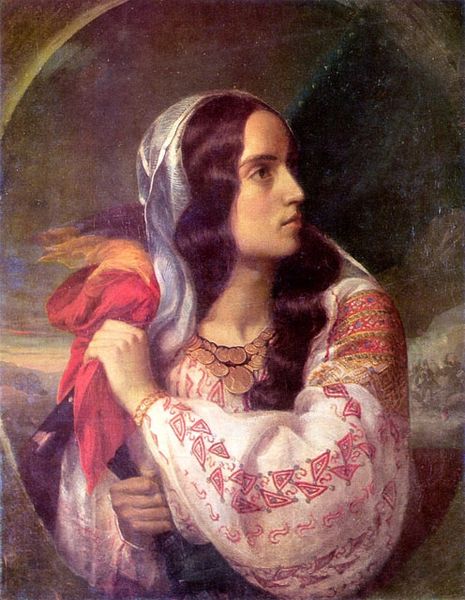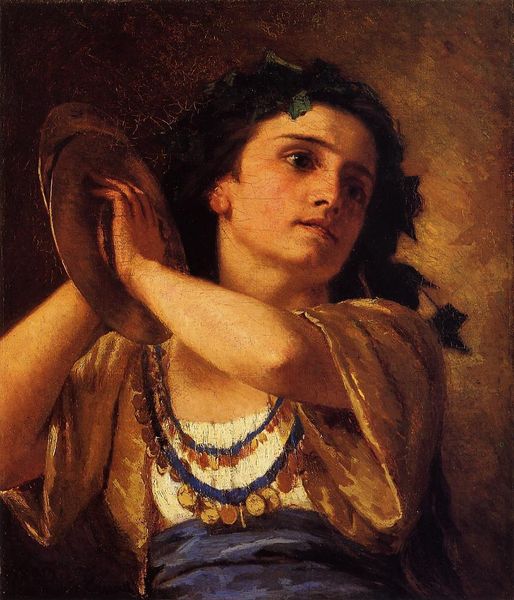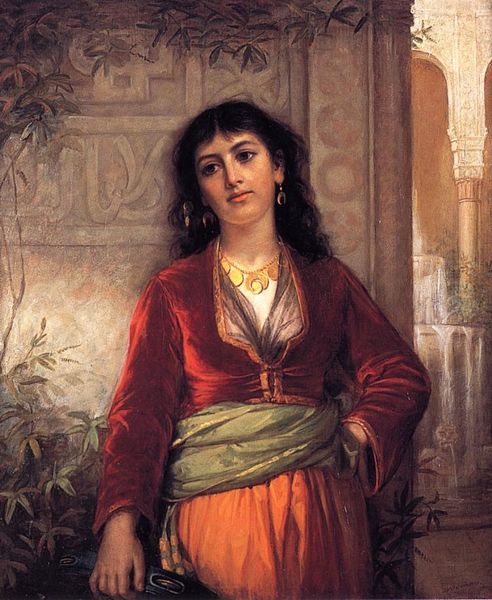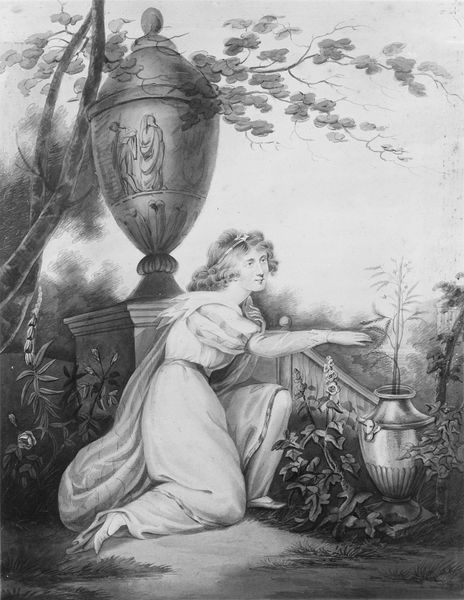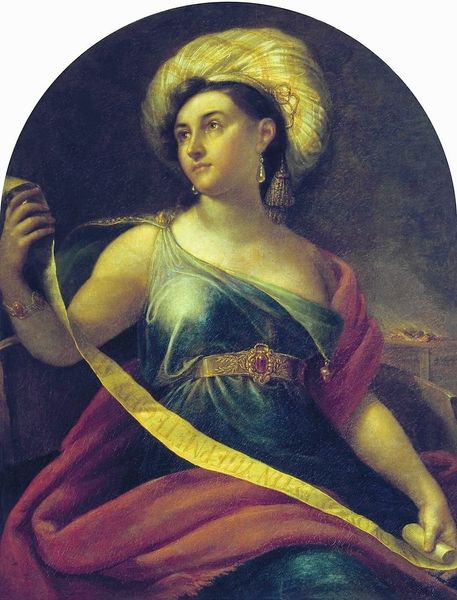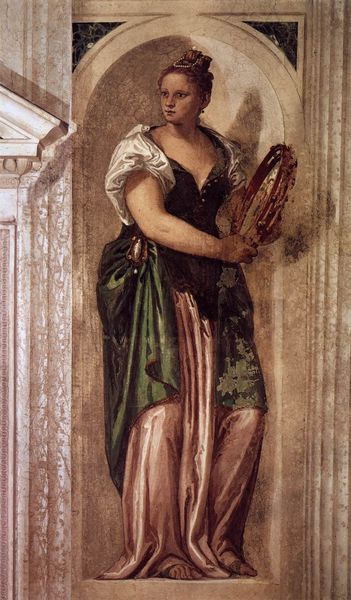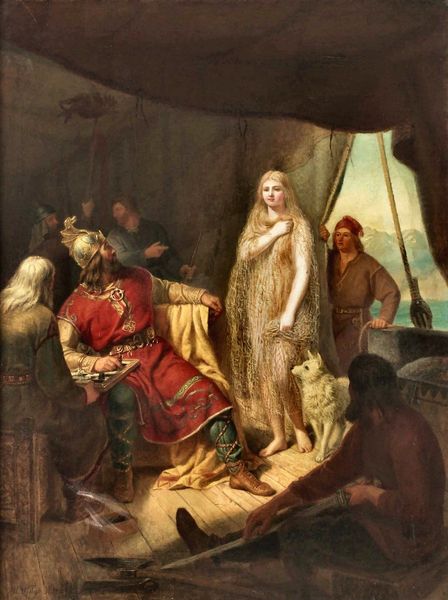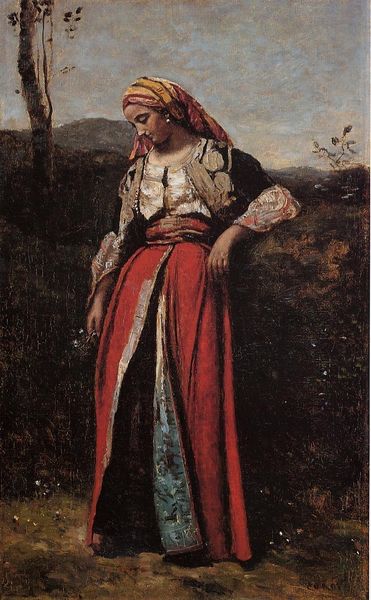
painting, oil-paint
#
portrait
#
painting
#
oil-paint
#
oil painting
#
portrait head and shoulder
#
romanticism
#
history-painting
#
academic-art
#
portrait art
#
fine art portrait
Dimensions: 137.6 x 96.6 cm
Copyright: Public domain
Curator: Let's turn our attention to Orest Kiprensky's "Tiburtine Sibyl," an oil painting completed around 1830. Editor: The first thing that strikes me is the light. There’s this interplay of darkness and illumination focused on the figure; it's undeniably Romantic in its sensibility. Curator: Absolutely, Kiprensky masterfully evokes Romanticism’s emphasis on emotion and the power of the individual through this image of the Sibyl. The Tiburtine Sibyl, in particular, was a powerful figure in the medieval imagination, believed to have prophesied the coming of Christ to the Roman Emperor Augustus. Kiprensky would likely have known this history and perhaps sought to evoke feelings related to Russia’s political destiny through association. Editor: The composition guides the viewer’s eye upward, starting from the scroll in her hand, traveling up her draped figure, and eventually resting on her gaze. There's a sense of contemplation, of profound interiority emphasized by the carefully arranged folds of drapery and the soft glow around her face. What do you make of these combined features? Curator: Kiprensky gives the Sibyl a weighty narrative: Her image reflects the 19th-century rise of nationalism alongside an imperial Russian identity. It speaks to the roles assigned to women during this period and how these legendary or mythological characters played a critical part in the narratives, a common phenomenon that remains with us today. Kiprensky engages with the broader European obsession with Sibyls. Editor: It is the formal tension between light and shadow, that really draws me in; you can really see that in her face, from the soft illumination of her right cheek to the shadow play beneath her features and in the hollows around her throat and upper chest. I'm curious how he might have thought about line versus mass. Curator: It is thought-provoking how artists like Kiprensky grappled with depicting mythological or quasi-historical figures within the context of contemporary social and political realities, particularly during a time of national awakening and imperial ambition. Editor: Thinking about her place in a tradition of figure painting certainly enriches my appreciation for this particular example. It goes without saying.
Comments
No comments
Be the first to comment and join the conversation on the ultimate creative platform.
